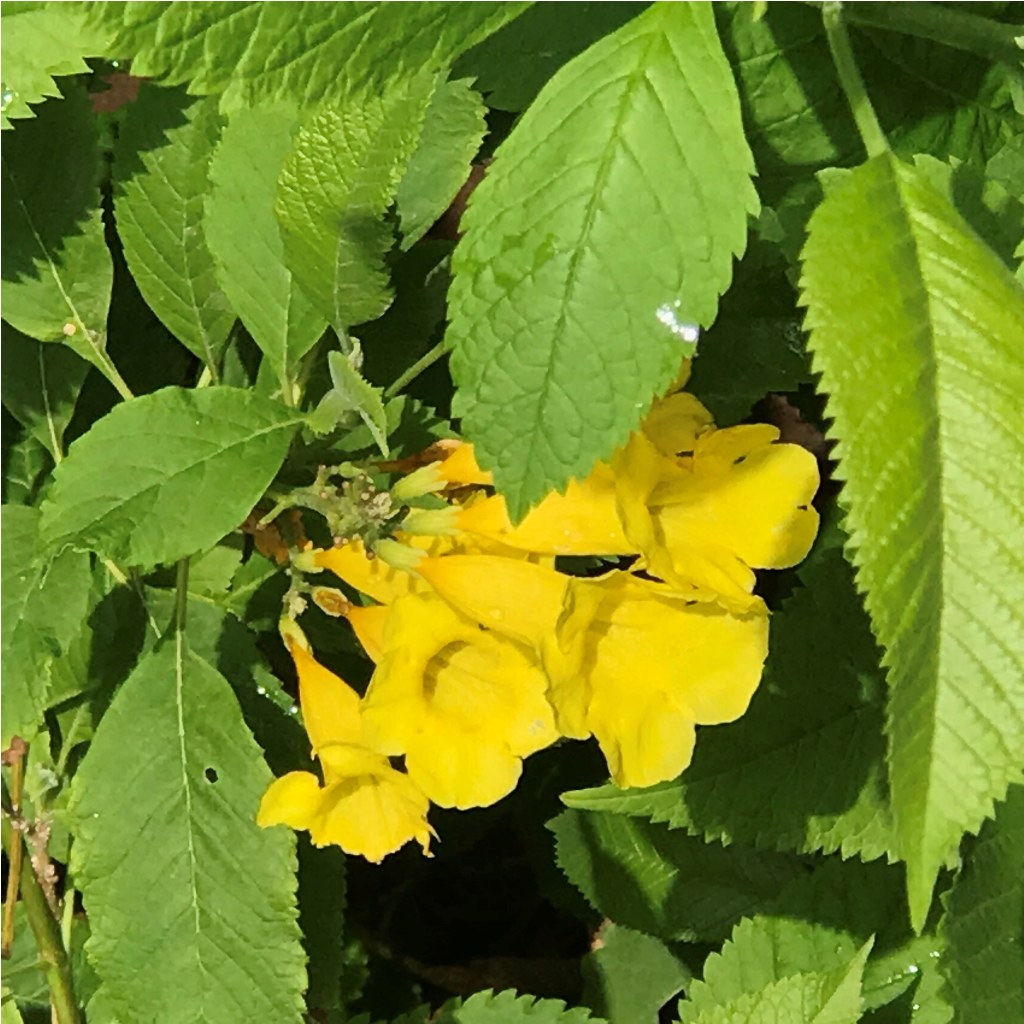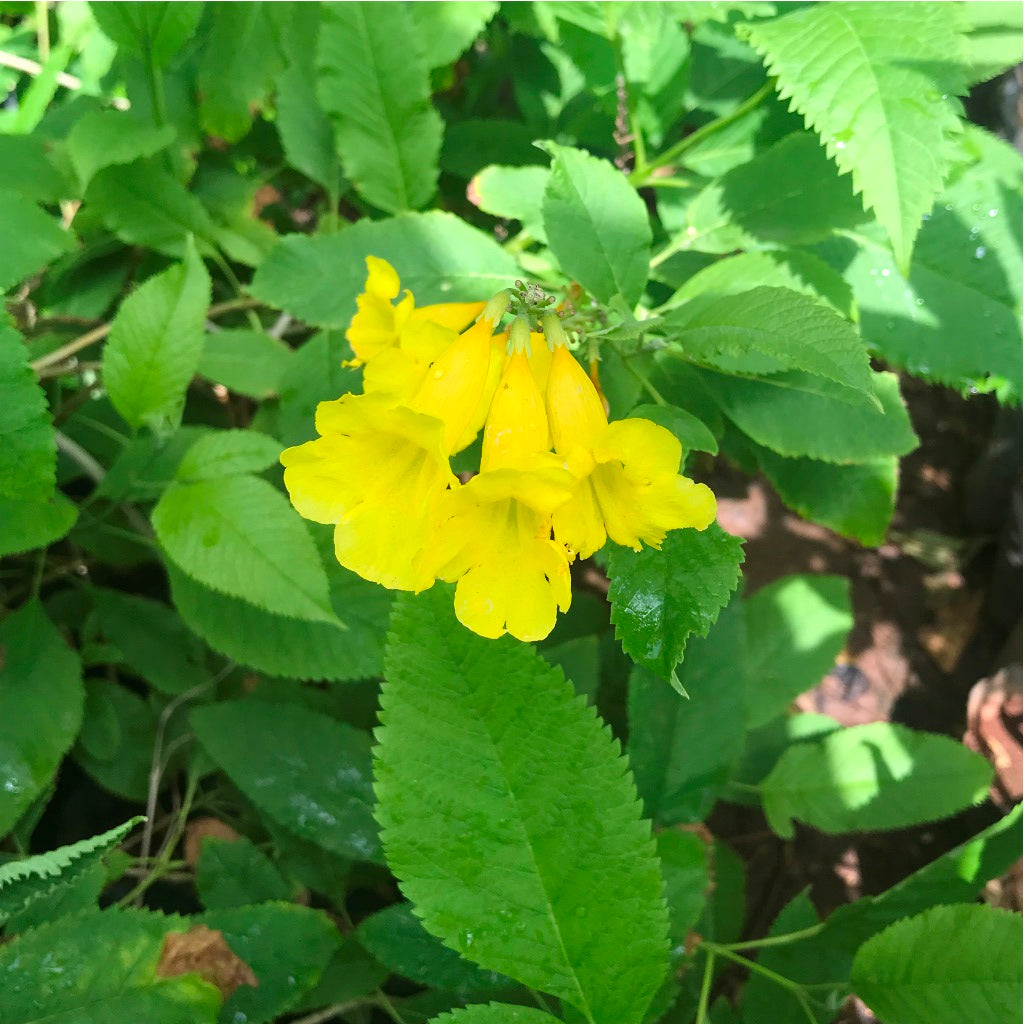Piliya
Family
Bignoniaceae
Origin
Central & South America
Description
Tecoma Stans commonly known as Yellow Bells grows as a densely branched shrub or small tree and gets its common name from its superficial resemblance of its foliage to that of elderberry.
It has bright green opposite leaves, which are pinnately compound with 1-9 (usually 3-7) sharply pointed oval leaflets. The 2-3 in (5-7.6 cm) long leaflets have sharply toothed edges. They are borne on very short petioles and are slightly hairy on the undersides along the midrib and in the vein axils.
The 1-2 in sunshine yellow flowers are trumpet shaped. They hang in showy clusters at the branch tips and forks, bending the twigs into arches with their weight. There are two folds along the bottom of the flower's throat and several delicate rust-red lines decorating the interior. The blooms appear in flushes throughout the growing season. They are followed by 4-8 in long stringbean-like pods that hang in vertical clusters. The fruit on is a "bean type" capsule about 8 inches long that ripens to a chocolate brown color.
Yellow Bells has been used for a variety of purposes in herbal medicine. Its primary applications have been in treating diabetes and digestive problems.
Environment
Yellow Bells needs full sun & likes well drained soil. It will grow on a wide variety of soils, including sand and limerock. The plants can be cut to the ground for rejuvenation in the early spring or carefully sheared during the growing season to control shape and size and promote new flushes of flowers.
Potted plants should be given minimal water when not in active growth
Landscape Use
Best set among more consistent shrubs where it can contribute color to a border or screen.















